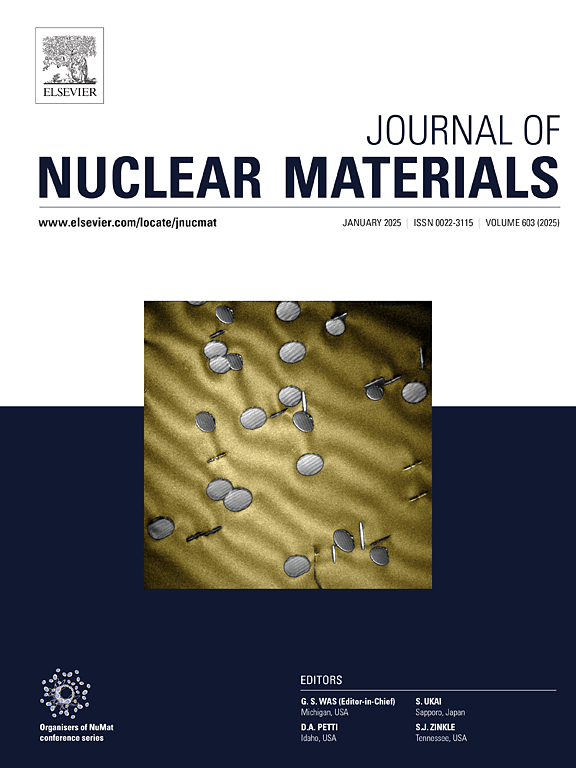Deep potential molecular dynamics simulation of local structure and properties of LiCl-KCl-CsCl-LaCl3 molten salt
IF 2.8
2区 工程技术
Q3 MATERIALS SCIENCE, MULTIDISCIPLINARY
引用次数: 0
Abstract
LiCl-KCl-CsCl molten salt is regarded as an ideal electrolyte for the pyroprocessing of spent nuclear fuel due to the lower melting point compared to molten salts studied in the mainstream. In this work, the local structure and properties of LiCl-KCl-CsCl-LaCl3 molten salts were systematically investigated over the temperature range of 573–813 K using deep potential molecular dynamics simulations. The short-range and intermediate-range ordering, along with the coordination environment of La3+ and their dependence on temperature and LaCl3 concentration, were analyzed based on radial distribution functions and structure factors. La3+ predominantly exists as 6-coordinated clusters in the melt because of its low free energy. As temperature and LaCl3 concentration rise, the short-range ordering of the melt decreases due to the weakened interactions between cations and Cl-, whereas the intermediate-range ordering exhibits an increasing trend. The variation in intermediate-range ordering is determined by both the Cl--decorated La3+ networks and the La-La networks. Moreover, a series of properties of LiCl-KCl-CsCl-LaCl3 melts were evaluated, including the self-diffusion coefficient, viscosity, ionic conductivity, heat capacity, thermal expansion coefficient, and thermal conductivity. With the continuous La enrichment in the salt, LiCl-KCl-CsCl molten salt demonstrates excellent electrical conductivity and thermophysical properties, highlighting its advantages and potential as a superior alternative for LiCl-KCl molten salt in pyroprocessing.
求助全文
约1分钟内获得全文
求助全文
来源期刊

Journal of Nuclear Materials
工程技术-材料科学:综合
CiteScore
5.70
自引率
25.80%
发文量
601
审稿时长
63 days
期刊介绍:
The Journal of Nuclear Materials publishes high quality papers in materials research for nuclear applications, primarily fission reactors, fusion reactors, and similar environments including radiation areas of charged particle accelerators. Both original research and critical review papers covering experimental, theoretical, and computational aspects of either fundamental or applied nature are welcome.
The breadth of the field is such that a wide range of processes and properties in the field of materials science and engineering is of interest to the readership, spanning atom-scale processes, microstructures, thermodynamics, mechanical properties, physical properties, and corrosion, for example.
Topics covered by JNM
Fission reactor materials, including fuels, cladding, core structures, pressure vessels, coolant interactions with materials, moderator and control components, fission product behavior.
Materials aspects of the entire fuel cycle.
Materials aspects of the actinides and their compounds.
Performance of nuclear waste materials; materials aspects of the immobilization of wastes.
Fusion reactor materials, including first walls, blankets, insulators and magnets.
Neutron and charged particle radiation effects in materials, including defects, transmutations, microstructures, phase changes and macroscopic properties.
Interaction of plasmas, ion beams, electron beams and electromagnetic radiation with materials relevant to nuclear systems.
 求助内容:
求助内容: 应助结果提醒方式:
应助结果提醒方式:


